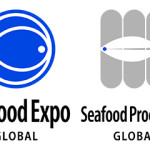Demand from aquaculture feed producers helped ensure China’s soy imports hit an historic high in 2020, totaling 100 million metric tons (MT), up from one million MT imported in 1995.
In an interview with SeafoodSource, U.S. Soybean Export Council (USSEC) China Director Xiaoping “Jim” Zhang said China’s uptake of soy represents a major win for the United States, which is one of the country’s top three soy suppliers (behind Brazil, which holds a 65 percent market share, but in front of Argentina). China now imports 80 percent of its total soy usage, and the USSEC has sought to promote use of U.S. soy and oilseed in aquaculture feed through the sponsorship and hosting of training programs for Chinese feed mills and marine farmers. It has also promoted an in-pond raceway system (IPRS) of aquaculture, and recently scored a win after helping a yellow catfish (Pelteobagrus fulvidraco) farm in Jiangsu Province, operated by Liyang Qianmatang Chenqiang Special Aquaculture, to obtain Best Aquaculture Practices (BAP) accreditation in February.
SeafoodSource: Did the use of soy for aquaculture feed grow in 2020? And if so, what kind of increase in demand for soy-based aquafeed did you see in tonnage and value?
Zhang: Due to the outbreak of COVID-19 in early 2020, the [country’s] aquafeed production was impacted to a certain extent, especially during the start of the season in March and April, when the highways in the country were still under [movement restrictions], which caused the non-arrival or late arrival of some feed ingredients that were needed for the feed production.
So the conclusion is there was probably no aquafeed production increase in 2020, [but perhaps also] no decrease. However, since the aquaculture production in China is so big – over 50 million MT for aquaculture in 2019 alone – the total feed consumption, in my opinion, would be around 35 million MT. The total consumption of soy products – soybean meal, SPC, soybean oil, and other forms of soy products – required to produce that many tons of aquacultured species is around 10 million MT.
SeafoodSource: How do you teach the Chinese fish farms about soy? Do you go only to the big aquaculture companies or do you try to sell to the small farmers?
Zhang: USSEC has been working with many aquafarms in China for 30 years. The main activities are feeding demonstrations, training, or workshops, and one-to-one tech services. With the feed companies, we have done also a lot of work, basically training them on the use of soy products with their feed formula and helping the feed mills to improve the feed processing techniques, regardless of whether they are big ones or small ones. [We train mills with] no smaller than 10,000 MT of feed production per annum.
SeafoodSource: What is the main advantage of soy as an aquafeed ingredient?
Zhang: Soy is the best protein ingredient among all the plant protein ingredients in terms of amino acid profile, balance, and availability to the animals. Moreover, soy probably is the most produced plant protein ingredient on the earth, so it is readily available almost everywhere. The use of soy in the aquafeed can greatly help to reduce the feed cost and sustain the ocean by reducing the fishmeal demand.
SeafoodSource: What is soy’s big competing ingredient in the Chinese aquafeed market?
Zhang: For U.S. soy, the biggest competitors in the Chinese market are soybeans from South America – that is, Brazil and Argentina. As for soy, I think its [main competitors] are probably rapeseed meal and canola.
SeafoodSource: Most new investments in China’s aquaculture sector appear to be going into big offshore facilities farming premium species like salmon. Will there be an opportunity for soy in this offshore expansion? And is soy a good feed for premium species like grouper and salmon?
Zhang: I don’t have any information about the investment scale of offshore cages in China. I am afraid I will have to agree with you that it should be big, as in China, whenever we are talking about investment in certain areas, it is always in mega size. Speaking of soy use on those premium species, I am very confident that the future is there. [Aquaculture] is always following this path: from capture to culture, from culture with live fish to [production and processing of] frozen fish, from frozen fish to [production with] formulated feed with just fishmeal as the only protein resource, from fishmeal-only feed to feed with gradually increased plant protein ingredient [soy] inclusion. Eventually, there will be always certain levels of soy inclusion in the feed for these species. There are some successful species to mention here: yellow croaker, largemouth bass, mandarin fish, grouper, and pompano. So the answer is positive.
SeafoodSource: What is your prediction for China’s uptake of soy-based aquafeed in 2021?
Zhang: In China, since the soy import will be over 100 million MT – either close to or hitting the historic record – the use of soy in aquafeed for sure will be on the increasing path. I have no idea how big the increase will be, but even with very conservative estimates of a 1 percent increase, it will be an additional 100,000 MT of soybean meal, or an equivalent of 130,000 MT of soybeans. Moreover, the overall trend in China is towards more and more fed species to be produced and the pandemic is almost gone, under very good control. So I am very optimistic.
Photo courtesy of U.S. Soybean Export Council







